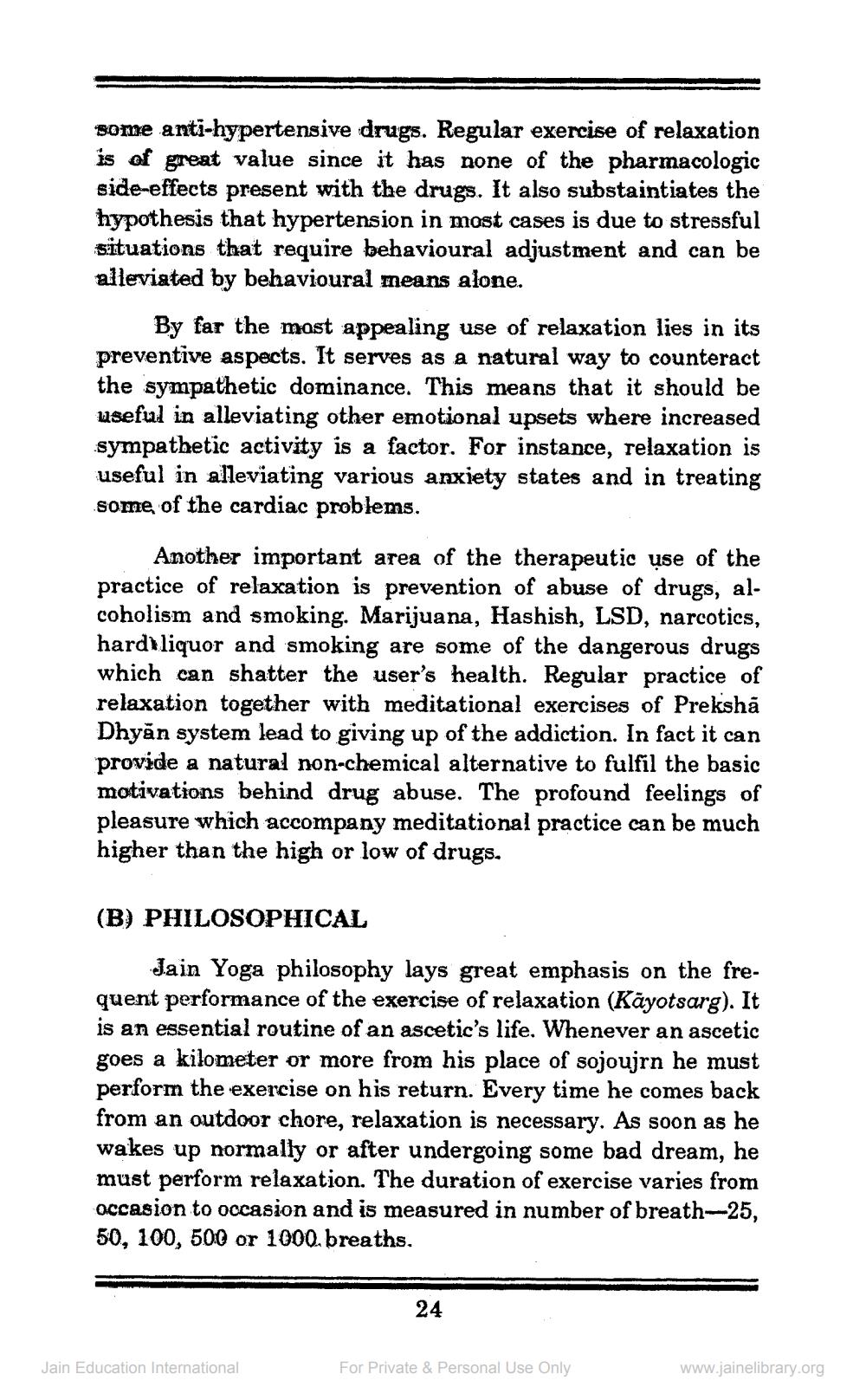________________
some anti-hypertensive drugs. Regular exercise of relaxation is of great value since it has none of the pharmacologic side-effects present with the drugs. It also substaintiates the hypothesis that hypertension in most cases is due to stressful situations that require behavioural adjustment and can be alleviated by behavioural means alone.
By far the most appealing use of relaxation lies in its preventive aspects. It serves as a natural way to counteract the sympathetic dominance. This means that it should be useful in alleviating other emotional upsets where increased sympathetic activity is a factor. For instance, relaxation is useful in alleviating various anxiety states and in treating some of the cardiac problems.
Another important area of the therapeutic ụse of the practice of relaxation is prevention of abuse of drugs, alcoholism and smoking. Marijuana, Hashish, LSD, narcotics, hardi liquor and smoking are some of the dangerous drugs which can shatter the user's health. Regular practice of relaxation together with meditational exercises of Prekshā Dhyān system lead to giving up of the addiction. In fact it can provide a natural non-chemical alternative to fulfil the basic motivations behind drug abuse. The profound feelings of pleasure which accompany meditational practice can be much higher than the high or low of drugs.
(B) PHILOSOPHICAL
Jain Yoga philosophy lays great emphasis on the frequent performance of the exercise of relaxation (Kāyotsarg). It is an essential routine of an ascetic's life. Whenever an ascetic goes a kilometer or more from his place of sojoujrn he must perform the exercise on his return. Every time he comes back from an outdoor chore, relaxation is necessary. As soon as he wakes up normally or after undergoing some bad dream, he must perform relaxation. The duration of exercise varies from occasion to occasion and is measured in number of breath-25, 50, 100, 500 or 1000. breaths.
24
Jain Education International
For Private & Personal Use Only
www.jainelibrary.org




